When the mercury drops and winter’s chill seeps into your living or working space, a space heater can provide a vital source of warmth and comfort. Whether you need to supplement a central heating system, warm up a chilly office corner, or heat a drafty room, choosing the right heater can make all the difference. Yet with so many models and technologies—ranging from infrared and ceramic heaters to oil-filled radiators—it can be difficult to determine which device fits your needs. This comprehensive guide will explore everything you need to know before selecting a space heater, from understanding different heating mechanisms and safety features to evaluating energy efficiency and budget considerations. By the end, you’ll have the knowledge to pick the perfect heater to keep your space cozy.
1. Define Your Heating Goals
Before diving into the technical details, clarify why and where you’ll be using the space heater:
- Primary or Supplemental Heat?
- Supplemental Heat: If you only need extra warmth in one or two rooms (like a bedroom at night), a smaller, portable heater might suffice.
- Primary Heat: If the space lacks central heating entirely or you’re heating a larger area, a more powerful device with continuous heating capacity may be necessary.
- Indoor or Outdoor Use?
- Indoor: Standard space heaters are designed for enclosed or semi-enclosed indoor areas.
- Outdoor: Specialized patio or outdoor heaters use different power sources (propane or natural gas) and designs to overcome outdoor temperature fluctuations.
- Room Size and Layout
- Approximate the square footage of the space. A typical rule of thumb is 10 watts of power per square foot for general heating. However, insulation, ceiling height, and drafts can change real-life needs.
- Portability and Versatility
- If you plan to move the heater between rooms, consider weight, handle placement, and cord length.
- If the heater will remain in one spot, a heavier, more robust design might be okay.
By outlining your usage—whether it’s just for a small home office or a large, poorly insulated garage—you’ll narrow down the type and capacity of space heater you need.
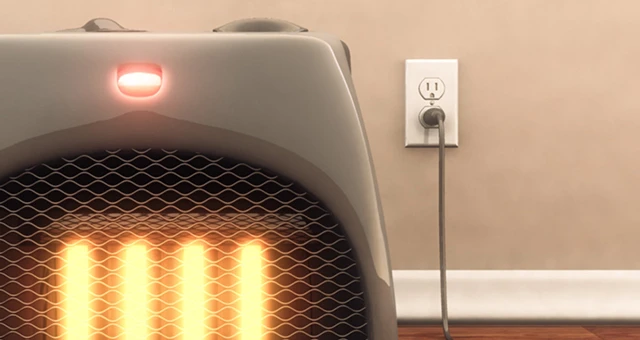
2. Key Types of Space Heaters
The market offers various heating technologies, each with unique pros and cons:
a) Fan-Forced Heaters
How They Work: A fan blows air over a heating element (often ceramic or metal coil), distributing warm air into the room.
- Pros:
- Fast heating; quickly warms the immediate area.
- Compact and portable designs are widely available.
- Typically inexpensive to purchase.
- Cons:
- The fan can produce noise, which might bother light sleepers.
- Heat disperses quickly once turned off—less heat retention.
If immediate warmth in a small to medium room is your priority, a fan-forced heater is a popular, cost-effective choice.
b) Ceramic Heaters
How They Work: Often a subset of fan-forced heaters, ceramic models use a ceramic heating element. As electricity passes through the ceramic, heat is generated, and a fan blows it out.
- Pros:
- Rapid heat-up.
- Often lightweight with safety features like an overheating sensor.
- Many have adjustable thermostats and oscillating bases for better heat distribution.
- Cons:
- Limited range if the fan isn’t strong.
- Still produce noise at higher fan speeds.
Ceramic heaters can be an excellent pick for smaller living rooms, offices, or bedrooms, balancing quick heat dispersion with moderate energy efficiency.
c) Oil-Filled Radiators
How They Work: Internally, these heaters warm up diathermic oil inside sealed columns. The oil remains in the heater permanently (no refilling needed). As the oil heats, it radiates warmth into the surrounding air.
- Pros:
- Quiet operation—no fan noise.
- They retain heat well, continuing to release warmth even after switching off.
- Often include built-in thermostats for steady, gentle heat.
- Cons:
- Slower to heat up initially compared to fan-forced units.
- Heavier and less portable.
- Surface can become quite warm (though typically not scorching).
Oil-filled radiators are well-suited for consistent, background heating of rooms where you need even, long-lasting warmth without the noise of a fan.
d) Infrared Heaters
How They Work: Infrared heaters emit radiant heat that warms objects and people directly, rather than just heating the air.
- Pros:
- Instant warmth—like standing in sunlight.
- Energy-efficient in targeted heating scenarios, as they can focus heat on occupants without significantly raising ambient air temperature.
- Quiet operation if no fan is used (some models do have fans for dispersion, though).
- Cons:
- Limited coverage area—works best in line-of-sight.
- Temperature can drop quickly if you move out of the infrared beam’s path.
- Often more expensive upfront.
Infrared heaters can be a good pick if you often stay in one spot (like a desk or reading chair) and want immediate, direct heat without raising the entire room’s temperature too much.
e) Panel/Convection Heaters
How They Work: Using convection principles, these slim, often wall-mountable panel heaters warm air in contact with the heating element, letting the warm air rise and circulate naturally.
- Pros:
- Silent operation, no fan noise.
- Can be space-saving, especially if wall-mounted.
- Steady, gentle heat distribution.
- Cons:
- Slower heating of the room.
- Not typically the most powerful in very cold conditions.
- Might require installation (mounting hardware) if you go with a wall option.
If aesthetics, silent operation, and minimal footprint matter to you, a panel heater can be a discreet choice for smaller rooms.
3. Heater Capacity and Wattage
Most plug-in electric heaters in North America range around 1500 watts max, typically generating around 5100 BTUs of heat. This is generally enough to heat an area of 150–200 square feet comfortably, given average insulation. Some smaller units might run 750–1000 watts for tight spots or personal space heating.
- Calculate Wattage Demand: A rough formula is 10 watts per square foot for normal conditions. For instance, a 1500-watt heater might handle up to 150 square feet.
- Multiple Heaters: If you need to cover a larger area or multiple rooms, you might require more than one unit or consider a more robust heating solution (like a furnace or ductless mini-split).
Keep in mind, many space heaters draw significant power. Make sure your electrical circuit can handle the load without constant tripping of breakers.
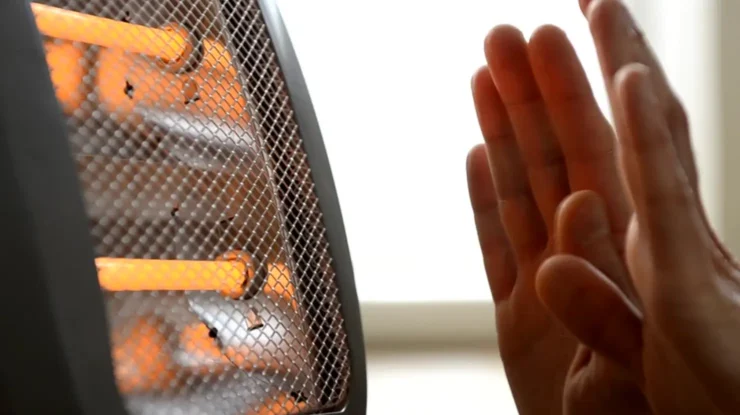
4. Energy Efficiency Considerations
Electric heaters are generally near 100% efficient at converting electricity into heat, but usage patterns significantly impact energy costs. Key strategies for efficiency:
- Thermostat or Temperature Control: Models with an adjustable thermostat or digital temperature display let the device cycle off when the desired temperature is reached, preventing excessive power usage.
- Timers and Eco Modes: Some heaters come with auto shut-off timers or eco modes that moderate output. Setting the device to shut down after you leave the room can cut energy waste.
- Supplemental vs. Whole-Room: If you’re only heating a small personal zone, a lower-watt personal heater can be more cost-effective than running a 1500W unit.
- Insulation: The best way to reduce heating costs is improving insulation and reducing drafts—no matter which heater you choose, proper insulation helps retain heat.
While electric space heaters might not outcompete central heating for large areas, they can be efficient if used strategically for zone heating in areas you occupy most.
5. Safety Features and Certification
Space heaters, if used improperly, can pose fire and burn hazards. Prioritize units with robust safety features:
- Tip-Over Protection: Automatically cuts power if the heater is knocked over.
- Overheat Protection: Shuts off or lowers output if internal components reach unsafe temperatures.
- Cool-Touch Housing: Especially important if children or pets are around, preventing burns upon contact.
- UL/ETL Certification: Indicates testing by recognized safety standards. Always check that your model is certified.
- Automatic Shut-Off Timer: Some advanced heaters let you set a time after which the unit powers off, helpful for overnight use or if you’re prone to forgetting.
Place the heater on a flat, stable surface, away from flammable materials (furniture, drapes, etc.). Never operate it unattended for extended periods unless it’s specifically designed and rated for safe continuous operation.
6. Noise Level
Some heaters, especially fan-forced varieties, can produce audible fan noise ranging from a gentle hum to a noticeable whir. For bedrooms or offices where quiet is desired, consider:
- Oil-Filled Radiators: Typically near-silent.
- Infrared Heaters (fanless models): Quiet, as they rely on radiant heat rather than airflow.
- Convection/Panel Heaters: Operate silently, relying on natural convection.
If you must use a fan-driven heater in a quiet environment, read reviews or find a model reputed for low noise levels (around 40–50 dB or less).
7. Controls and Additional Features
a) Thermostat and Display
Many models feature a digital thermostat, allowing you to set an exact temperature (e.g., 72°F). Others provide a simple dial or “Low/Medium/High” settings. A digital display can offer more precise control and reduce guesswork.
b) Remote Control
Some mid-range or higher-end space heaters come with a remote, enabling you to adjust power, temperature, or mode from across the room—convenient for bedrooms or living rooms.
c) Oscillation
Oscillating heaters rotate side-to-side, distributing warm air more evenly. This can help warm a broader area, especially useful for fan-forced or ceramic tower designs.
d) Programmable Timer
A timer function lets you set the heater to start or stop after a certain period, beneficial if you want the room warmed before you wake up or if you prefer it to shut down automatically after bedtime.
e) Wi-Fi or Smart Home Integration
Some advanced models can connect to your home’s Wi-Fi, allowing control via smartphone app or voice assistants (Alexa, Google Assistant). This can be handy for adjusting the temperature remotely or integrating with your smart home routines.
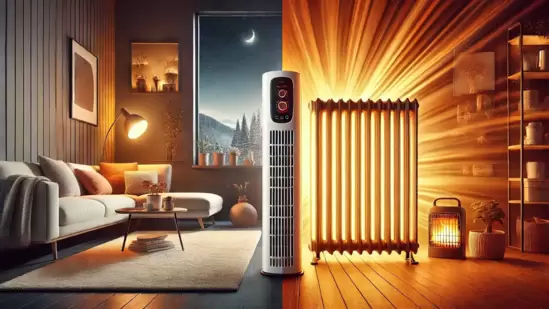
8. Size, Weight, and Portability
a) Dimensions
Consider the heater’s physical footprint if you have limited floor space. Tower-style heaters use vertical space effectively, whereas oil-filled radiators might be bulkier. If space is extremely tight, a small ceramic tabletop model or wall-mounted panel heater might be more practical.
b) Weight and Handles
If you plan on moving the heater between rooms, check whether it has a convenient carrying handle or built-in wheels (common for oil-filled radiators). Some small fan heaters weigh under 5 pounds, making portability straightforward.
c) Cord Length
The heater’s cord should be long enough to reach an outlet without extension cords, which pose a fire hazard. If an extension cord is necessary, ensure it’s a heavy-duty extension specifically rated for high electrical load.
9. Brand Reputation and Warranties
Quality matters for an appliance that deals with high heat. Look for established brands with positive reviews and robust safety records. Some popular space heater brands include De’Longhi, Lasko, Honeywell, Dyson, Vornado, and more. Check:
- Warranty Length: Many heaters offer a 1- to 3-year warranty.
- Customer Service: A brand with good support can be vital if you run into technical issues or safety concerns.
10. Budget Considerations
Prices vary widely, from $20 basic fan heaters to $300+ advanced tower models with digital displays, remote control, and multiple safety features. As you weigh cost:
- Determine Must-Have vs. Nice-to-Have Features: If you need only minimal heat occasionally, a basic but safe model might suffice.
- Long-Term Energy Costs: A model with precise thermostat control or higher efficiency may pay off in power savings over time.
- Quality Over Cheap: With space heaters, reliability and safety can be more important than saving a few dollars. Inexpensive no-name models might pose higher risk.
11. Common Mistakes to Avoid
- Oversizing or Undersizing: A too-powerful heater could cycle frequently or create hot spots, while an underpowered unit can’t adequately heat the room.
- Ignoring Clearance Requirements: Some heaters need a 3-foot clearance from flammables. Never drape clothing or towels over a heater.
- Leaving It Unattended: Unless the unit is designed for safe continuous operation and placed properly, never leave a portable heater running in an unoccupied space.
- Using Extension Cords: Heaters draw significant current. Extension cords can overheat or be a trip hazard. If needed, use a heavy-duty cord rated for the wattage.
- Blocking Airflow: Some heaters draw air from the rear for best circulation—placing them against a wall or blocking the intake can reduce performance or cause overheating.
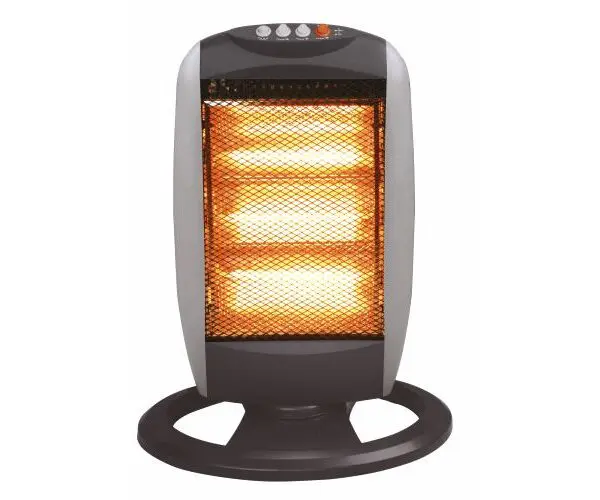
12. Special Scenarios
a) Bedrooms
For bedrooms, noise level and safety are crucial. Oil-filled radiators or panel heaters provide consistent warmth with minimal sound. A thermostat or timer helps avoid overheating during the night. Models with tip-over and overheat protection are essential.
b) Bathrooms
Use only UL-rated or ETL-listed heaters specifically approved for bathroom environments. Moisture and risk of electric shock demand extra care. Some units have built-in GFCI protection or are specifically designed for damp locations. Always keep the unit away from direct water contact.
c) Child or Pet Safety
If kids or pets are around, choose a heater with:
- Cool-touch surfaces so they can’t burn themselves.
- Stable base and tip-over switch.
- Minimal cords or carefully managed cables to avoid entanglement.
Consider placing the heater out of children’s reach and teaching older kids about heater safety.
13. Checking the Room’s Insulation and Ventilation
Even the best space heater struggles in a drafty or poorly insulated space. Seal windows, close gaps under doors, and ensure minimal air leakage. For safety, if the heater is in a small closed room, ensure some ventilation to prevent oxygen depletion (especially for propane or natural gas heaters, though less of an issue for standard electric units).
14. Maintenance and Longevity
- Regular Cleaning: Dust buildup on intake vents or heating elements can reduce efficiency and pose a fire risk. Wipe the exterior and vacuum vents periodically.
- Annual Check: Inspect the power cord for fraying or damage each season.
- Storage: When not in use, store the heater in a cool, dry place, protecting it from dust.
- Expected Lifespan: With proper care, a decent quality electric space heater can last many years.
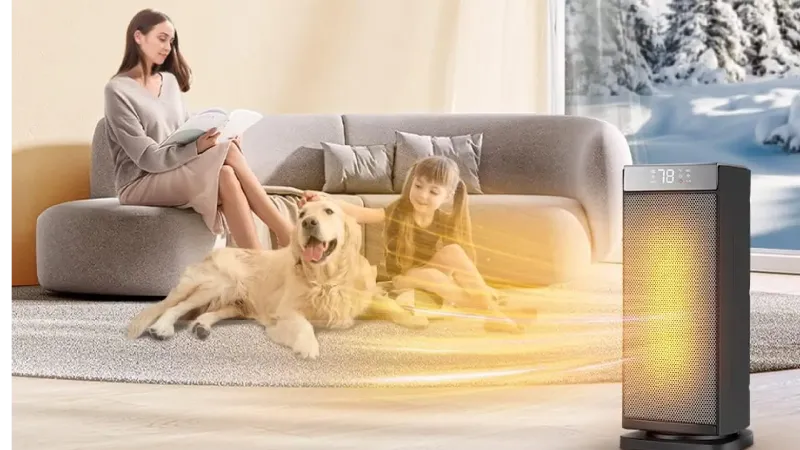
15. Conclusion
A space heater can be an invaluable tool for keeping small areas warm and cozy, particularly when you need a quick or flexible heating solution. By focusing on the type of heater (fan-forced, ceramic, oil-filled, infrared, panel, etc.), matching wattage and capacity to your room size, prioritizing safety features and energy efficiency, and selecting a reputable brand, you’ll be well on your way to selecting the optimal device for your needs.
Key steps include:
- Define Usage: Is it for a small bedroom, a large living room, or an office corner? Understanding the space you’re heating shapes the type and capacity you need.
- Choose the Technology: Fan-forced ceramic for fast heat, oil-filled for gentle and silent warmth, infrared for direct radiant heat, or panel heaters for discreet operation.
- Assess Safety Features: Look for tip-over protection, overheat shut-off, UL/ETL certification, and a stable design to minimize fire risks.
- Consider Noise Level: If you want quiet, an oil-filled or panel heater might be better than a fan-based unit.
- Review Budget: Balance initial purchase cost with operational efficiency, ensuring you get a unit that meets your performance expectations.
Finally, always use your space heater responsibly—keep flammables away, follow proper clearance guidelines, and avoid leaving it unattended for long periods. With thoughtful selection and safe usage, a well-chosen space heater can transform a chilly, uncomfortable room into a snug, inviting haven throughout the cold season.
